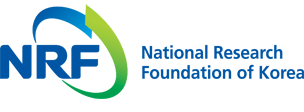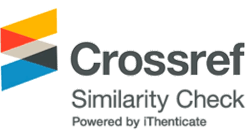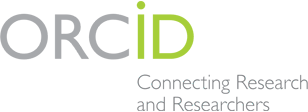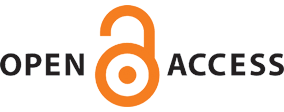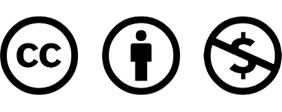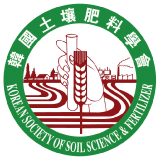Instructions for Authors
Korean Journal of Soil Science and Fertilizer (KJSSF) is a journal published and distributed by the Korean Society of Soil Science and Fertilizer (KSSSF). It covers all scientific and technological aspects of soil science and fertilizer. Contributions reporting original research or reviews dealing with some aspects of soil and fertilizer will be considered from all disciplines. The KJSSF publishes studies that make a significant contribution to the advancement of knowledge or toward a better understanding of existing concepts. A prerequisite for submission and consideration of manuscripts is that at least one of the authors should hold membership in the KSSSF.
For the policies on the research and publication ethics not stated in this instructions, International standards for editors and authors (https://publicationethics.org/resources/resources-and-further-reading/international-standards-editors-and-authors) will be applied.
Peer-review Process
Authors are welcome to suggest suitable reviewers and/or request the exclusion of certain individuals when they submit their manuscripts. Editorial board will decide if the manuscript is to be accepted, rejected, or peer-reviewed based on the following criteria: field of research, scope of work, quality of language usage, adequacy of tables and figures, and observance of format. Acceptance of the paper will depend upon its scientific merit and suitability for the journal. The reviewers’ and editor’s suggestions will be conveyed to the corresponding author (henceforth ‘the author’) without identifying the reviewers, and the author will have an opportunity for revision with full and sole responsibility. The revised manuscript must bear a sign ‘REVISED’ on top right of the title page. If a manuscript returned to the author for revision is held longer than eight weeks, the submission will be considered withdrawn, unless a previous arrangement has been made with the Editor-in-Chief. Even after the ‘accept decision’ by Editor-in-Chief, the author may be asked to make revision regarding both editorship and scientific aspect of the manuscript overlooked during review process, if necessary, by the editorial office.
Submission of Manuscripts
Submission of an article is understood to imply that the article is original and is not being considered for publication elsewhere. Manuscript should be submitted by on-line submission system at http://submission.kjssf.org/. If on-line submission is not possible, author can submit manuscript via email at ksssf733@naver.com.
Types of Contribution
The KJSSF publishes five types of article including Original research article, Short communication, Review, Editorial, and Opinion.
• “Original research article” cover full reports of research works that require precise descriptions and clear interpretations of theoretical or experimental works.
• “Short communication” is a concise (less than four printed pages) but complete description of a limited investigation, which containing analytical techniques, laboratory and field equipment design, computer software, studies of limited scope, preliminary data, and unique observations.
• “Review” is a comprehensive article on a subject written by following the format of “Original research article”. However, the subdivision of review articles can be changed depending on the content.
• “Editorial” are written freely and consecutively without English abstracts and subheading. “Editorial” are written by the editorial members, but may be invited.
• “Opinion” reports original and personal views on a subject of active current interest based on published data. “Opinion” must be written in the same format as the articles but must contain no more than two tables and figures.
Preparation of Manuscripts
1. Manuscripts should be written in Korean or English. Authors whose native language is not English are strongly advised to have their manuscripts edited by an English-speaking colleague or by a commercial English-editing service prior to submission.
2. Manuscripts should be typewritten, typed on one side of the paper, with wide margins and double spacing throughout, i.e. also for abstracts, footnotes and references. Every page of the manuscript, including the title page, tables, etc. should be numbered.
3. Manuscripts in general should be organized in the following elements, which are described in detail below: Title page, Abstract, Text, References, Figure captions, Tables, and Figures.
4. In tying the manuscript, titles and subtitles should not be run within the text. They should be typed on a separate line.
5. SI units should be used. Symbols of the units should be spaced from the numbers to which they refer except for °C and %. Use a space to show multiplication of units and a negative exponent to show division (e.g., m s-1 is preferred to m/s). For liter, use “L” instead of “l” for liter.
6. Define abbreviations at first mention in the abstract or text, and again in the tables and figures, e.g., cation exchange capacity (CEC). Though the first mention is appeared in the abstract, it should be mentioned again in the main text.
Title Pages
The title page should include:
1. Form of the manuscript
2. Name(s) of author(s)
3. Complete postal address(es) of affiliations
4. Complete correspondence address to which the proofs should be sent
5. ORCID of the first and corresponding authors
6. Full telephone number and Email address of the corresponding author
Abstracts
1. The abstract should be clear, descriptive and not longer than 300 words.
2. Key words, normally 3-6 items, must follow the abstract on the same page.
Research Highlight
1. The mandatory highlights are important because they appear online in the Table of Contents of the journal.
2. Authors must provide images and tables that represent the research described in the article.
Main Body
1. The main text of the manuscript is typically comprised of Introduction, Materials and Methods, Results and Discussion, Conclusions, and Acknowledgement.
2. Introduction: The background, significance, objective, and hypothesis should be clearly and concisely stated. Numerous references should be cited to develop the introduction.
3. Materials and Methods: Specific experimental methods should be sufficiently detailed for others to repeat the experiments unequivocally. Apparatus, reagents, and biological materials used in the study should be incorporated. List devices of a specialized nature or instruments may vary in performance. Biological materials should be identified by scientific name (genus, species and authority) and cultivar, if appropriate, together with the site from which the samples obtained.
4. Results and Discussion: Results and discussion may be presented in separate sections or combined into a single section. Be complete but concise in discussing findings by stating if the hypothesis is accepted or not and by comparing results with previous work and proposing explanations for the results observed. All data must be accompanied by appropriate statistical analyses.
5. Conclusions: A separate conclusion section can be used. Do not repeat the results and discussion, but provide implication and limitation of the study. Suggestion of future study is also highly encourage.
6. Funding: Provide the funding agency and the project number of the fund.
7. Conflict of Interest: Authors must identify and declare any financial and personal circumstances or interests that may be perceived as influencing the representation or interpretation of reported research results. If there is no conflict of interest, please state, “The authors declare no conflict of interest.”
8. Author Contribution: For transparency we require corresponding authors to provide co-author contributions to the manuscript using the relevant CRediT (Contributor Roles Taxonomy) roles. The CRediT Taxonomy (https://credit.niso.org) includes 14 different roles describing each contributor’s specific contribution to the scholarly output. The 14 roles are “Conceptualization”, “Resources”, “Data curation”, “Software”, “Formal analysis”, “Supervision”, “Funding acquisition”, “Validation”, “Investigation”, “Visualization”, “Methodology”, “Writing-original draft”, “Project administration”, and “Writing-review & editing”
9. Data Availability: Provide the availability of the data transparency of the study by choosing one of the followings.
1) This study does not contain any experimental data
2) Data will be provided on reasonable request
3) Data used in this study is provided in the supplemental material
4) All data used in this study is found in the paper
5) Data are available at http://www._______ (actual address of data available)
10. Acknowledgement: Include essential credits but hold to an absolute minimum.
Tables
1. Tables should not duplicate matter that is presented in figures.
2. Authors should take notice of the limitation set by the size and lay-out of the journal. If many data are to be presented, an attempt should be made to divide them over two or more tables.
3. Table should be numbered according to their sequence in the text. The text should include references to all tables.
4. Tables should be typewritten on separate pages of the manuscript. Table should never be included in the text.
5. Each table should have a brief and self-explanatory title.
6. Column headings should be brief, but sufficiently explanatory. Standard abbreviations of unit of measurement should be added in the following separate row of column headings.
7. Vertical lines should not be used to separate columns.
8. Any explanation essential to the understanding of the table should be given as a footnote at the bottom of the table.
9. Use the following symbols for footnotes in the order shown: a superscript Arabic numerals (1, 2, 3, 4, 5, 6, 7, 8, 9).
Figures
1. All figures (line drawings and photographs) should be submitted separately.
2. Figures should be numbered according to their sequence in the text, and references should be made in the text to each figure.
3. Each figure should be identified on the lower front side by its number and the name of the author.
4. Figures should be designed with the format of the page of the journal in mind.
5. Make sure that the size of the lettering is big enough to be legible. The lettering should be in English.
6. Each figure should have a caption. The captions to all figures should be typed on a separate sheet of the manuscript.
7. Explanations should be given in the typewritten legend. Drawn text in the figures should be kept to a minimum.
8. Photographs are only acceptable if they have good contrast and intensity.
9. Color figures cannot usually be included, unless the cost of their reproduction is paid for by the author.
References
1. All publications cited in the text should be presented in a list of references following the text of the manuscript.
2. In the text refer to the author’s name (without initial) and year of publication (Kramer, 1989; Kim and Park, 2000; Kim et al., 2001).
3. If reference is made in the text to publication written by more than two authors, the name of the first author should be used followed by “et al.” (Kim et al., 2002). This indication, however, should never be used in the list of references. In this list names of first author and co-authors should be mentioned.
4. References cited together in the text should be arranged chronologically. The list of references should be arranged alphabetically in authors’ name, and chronologically per author. If an author’s name in the list is also mentioned with co-authors, the following order should be used: publication of the single author, arranged according to publication dates-publications of the same author with one co-author-publications of the author with more than one co-author. Publication by the same author(s) in the same year should be listed as 2023a, 2023b, etc.
5. Use of DOI is highly encouraged.
6. 11 or more authors: 10 author’s name followed by “et al.” in the list of references.
7. Use the following system for arranging your references:
a. For periodicals
• Hong KD. 2023. The word human comes from the Latin word humus meaning soils. Korean J. Soil Sci. Fert. OO:OO-OO. https://doi.org/10.OOOO/KJSSF.2023.56.2.127
• Hong KD, King SJ, Lee SS. 2023. The word human comes from the Latin word humus meaning soils. Korean J. Soil Sci. Fert. OO:OO-OO. https://doi.org/10.OOOO/KJSSF.2023.56.2.127
• Hong KD, King SJ, Lee SS, An JG, Kim DJ, Jang YS, Yun DJ, Yun BK, You KS, Jung YY, et al. 2023. The word human comes from the Latin word humus meaning soils. Korean J. Soil Sci. Fert. OO:OO-OO. https://doi.org/10.OOOO/KJSSF.2023.56.2.127
b. For books
• Barritt BH. 1992. Intensive orchard management: A practical guide to the planning, establishment, and management of high density apple orchards (2nd ed.). Good Fruit Grower, Yakima, Japan.
• NIAST (National Institute of Agricultural Science and Technology). 1988. Methods of soil chemical analysis. RDA, Suwon, Korea.
• NIAST (National Institute of Agricultural Science and Technology). 2000. Methods of soil and plant analysis. RDA, Suwon, Korea.
• NAAS (National Academy of Agricultural Science). 2010. Methods of soil analysis. RDA, Suwon, Korea.
• NIAST (National Institute of Agricultural Science and Technology). 2000. Taxonomical classification of Korean soil. RDA, Suwon, Korea.
• NAAS (National Academy of Agricultural Science). 2014. Taxonomical classification of Korean soil. RDA, Suwon, Korea.
• NAS (National Institute of Agricultural Science). 2019. Fertilizer application recommendations for crops (4th ed.). RDA, Wanju, Korea.
c. For chapters in books
Keeney DR, Nelson DW. 1982. Nitrogen—Inorganic Forms. pp. 643-698. In Page AL et al. (Eds.) Methods of soil analysis, Part 2. Chemical and microbiological analysis (2nd ed.). Soil Science Society of America, Madison, WI, USA.
d. For thesis
• King SJ. 2023. Title of dissertation or thesis (Publication No., if any) [Doctoral Dissertation or Master’s Thesis, Name of Institution (University)]. https://doi.org/... (if given).
• Cho BO. 1999. Characterization of soil fertility and management practices of alpine soils under vegetable cultivations. Ph.D. Thesis, Kangwon National University, Chunchon, Korea.
e. For edited symposia, special issues, etc. published in aperiodical
• Lidster, WA, Ford HW. 1981. Rehabilitation of ochre clogged agricultural drains. pp. 451-463. In Proceedings of the 11th International Commission on Irrigation and Drainage, ICID, New Delhi, India.
• Kang, YK, Stutte CA. 1982. Effects of silicon on growth and physiological activities of rice. Research Report 24. Rural Development Administration, Suwon, Korea.
f. Patents
Roth TL. 1972. The manufacturing process of natural insecticide. U.S. Patent 3670.
8. Abbreviate the titles of periodicals mentioned in the list of references; according to the List of Periodical Title in ISI (Institute for Scientific Information).
9. If the title is in a language other than English, the title should be translated into English, and a note such as ‘(in Korean)’ or ‘(in Japanese, with English Abstract)’ should be added at the end of the reference.
10. References concerning unpublished data and “personal communications” should not be cited in the reference list but may be mentioned in the text.
Copyright
1. An author, when quoting form someone else’s work or when considering reproducing an illustration or table from a book or journal article, should make sure that he/she is not infringing a copyright.
2. A suitable acknowledgement of any borrowed material must always be made.
Manuscript Revisions
Authors have 15 days to make revisions and return their manuscripts following reviewer and editor comments. If not returned within 15 days, the manuscript will be released, unless there was a previous arrangement with Editor-in-Chief. And it must be resubmitted as a new paper.
Proofs
Page proofs and reprint order forms are sent to the corresponding author, together with instructions on the payment of page charges and reprint costs. This proof stage is not a time for extensive corrections, additions, or deletions. It is advised that editing be limited to the correction of typographical errors, incorrect data, and grammatical errors, and for updating information on references that had been in press. The corrections to page proofs should be sent immediately by e-mail or a fast mail service, preferably within 2 business days.
Publication Charge
Publication fee will be charged for the articles that acknowledge funding sources and for the articles went through “Express Review Processing (ERP)”. When articles that went through ERP have funding sources acknowledgement, additional fee will be charged. No publication fee will be charged for publication in other cases (i.e., no funding acknowledgement).
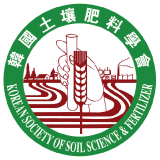

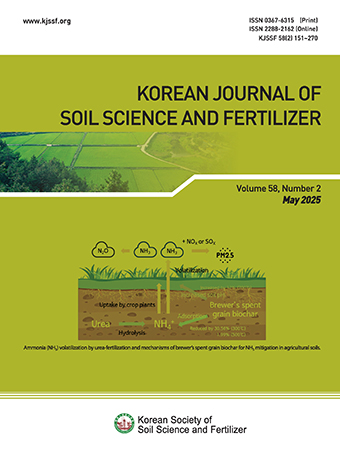 Korean Journal of Soil Science and Fertilizer
Korean Journal of Soil Science and Fertilizer
